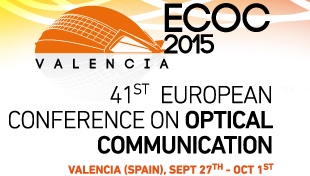1 – FIBRES, FIBRE DEVICES AND FIBRE AMPLIFIERS
Optical fibres, their design, fabrication and characterisation, physics of light propagation in optical fibres, fibre amplifiers and fibre lasers, as well as fibre based devices and specialty optical fibres for telecommunication and other applications.
2 – WAVEGUIDE AND OPTOELECTRONIC DEVICES
Design, fabrication, testing of performances and reliability of devices and components used to generate, amplify, detect, route, interconnect and process optical signals for information transport and processing, routing and interconnecting. Technologies include planar and 3D waveguides, bulk optics, based on various material systems.
3 – DIGITAL AND OPTICAL SIGNAL PROCESSING
Modeling, design, and implementation of digital and/or optical techniques, for signal processing for long-haul, metro or access networks. This area includes digital signal processing algorithms for transmitters and coherent receivers, error correction coding optical regeneration and any other schemes for impairment mitigation. Analog signal processing subsystems and engines for broadband wireless to fibre segment interfacing and vice-versa are also covered.
4 – SUBSYSTEMS FOR OPTICAL NETWORKING AND FOR DATACOMS
Modeling, design, implementation and test of optical, optoelectronic, or electrical subsystems, including line terminals with advanced modulation formats and functionalities, performance monitoring techniques and devices, add-drop multiplexers, optical switches, optical packet routers, optical interconnects, and original measurement equipment. In addition, the area considers interconnection devices, subsystems and architectures that address the challenges of Datacom and Computercom.
5 – POINT-TO-POINT TRANSMISSION SYSTEMS
Modeling, design, lab and field implementation of optical transmission fiber links, highlighting system-level implications of physical impairments and impairment mitigation techniques. Contributions to this area are concerned with aspects such as capacity, reach, flexibility, of optical transmission systems and solutions to overcome the current limitations. Papers illustrating the transmission benefits of novel fibres, devices, subsystems and combined multiplexing techniques are welcome. Quantum communication systems based on optical fibre and free-space optical links are also covered.
6 – CORE, METRO AND DATA CENTER NETWORKS
Modeling, design, architecture, planning and scaling of optical transport for optical circuit and packet switched core, metro, inter and intra data center networks. This also includes control, orchestration, and management functions, as well as the integration with higher layer network and data center services. It also covers aspects of successful network deployments and field trials.
7 – ACCESS, LOCAL AREA AND HOME NETWORKS
Networking aspects of broadband optical access, local-area and home networks. It covers FTTx, passive optical networks, radio-over-fibre systems, optical wireless and free space systems, hybrid wireless/optical solutions, in-building networks. It also comprises aspects of cost and energy savings, successful mass deployments and field trials. The topic of optical interconnects is covered within the 4th topical area.
|


